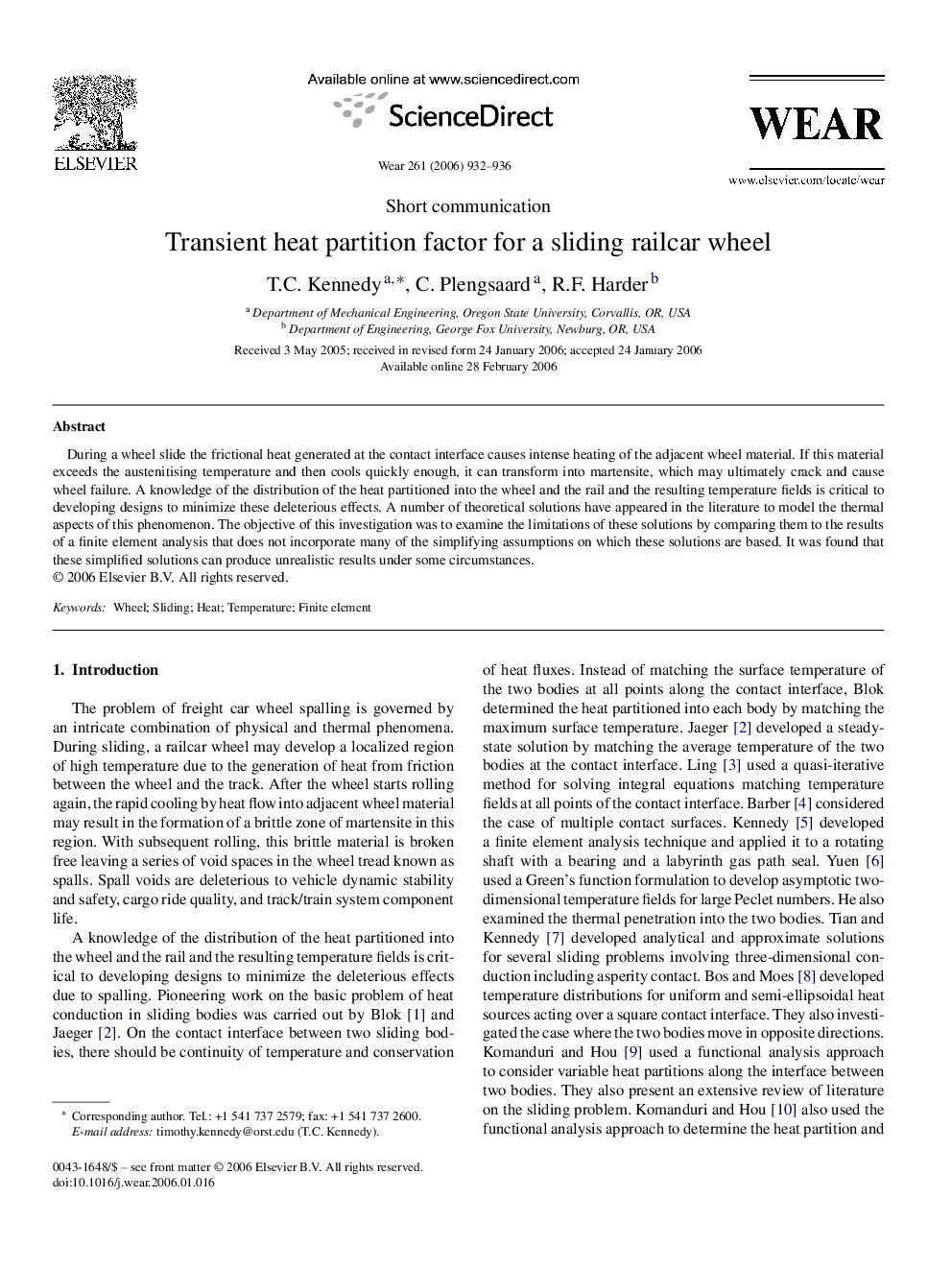| Article ID | Journal | Published Year | Pages | File Type |
|---|---|---|---|---|
| 619969 | Wear | 2006 | 5 Pages |
During a wheel slide the frictional heat generated at the contact interface causes intense heating of the adjacent wheel material. If this material exceeds the austenitising temperature and then cools quickly enough, it can transform into martensite, which may ultimately crack and cause wheel failure. A knowledge of the distribution of the heat partitioned into the wheel and the rail and the resulting temperature fields is critical to developing designs to minimize these deleterious effects. A number of theoretical solutions have appeared in the literature to model the thermal aspects of this phenomenon. The objective of this investigation was to examine the limitations of these solutions by comparing them to the results of a finite element analysis that does not incorporate many of the simplifying assumptions on which these solutions are based. It was found that these simplified solutions can produce unrealistic results under some circumstances.
